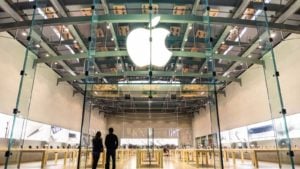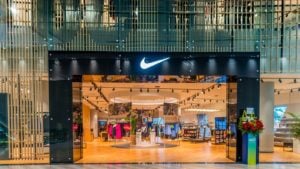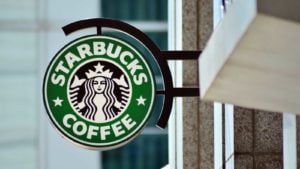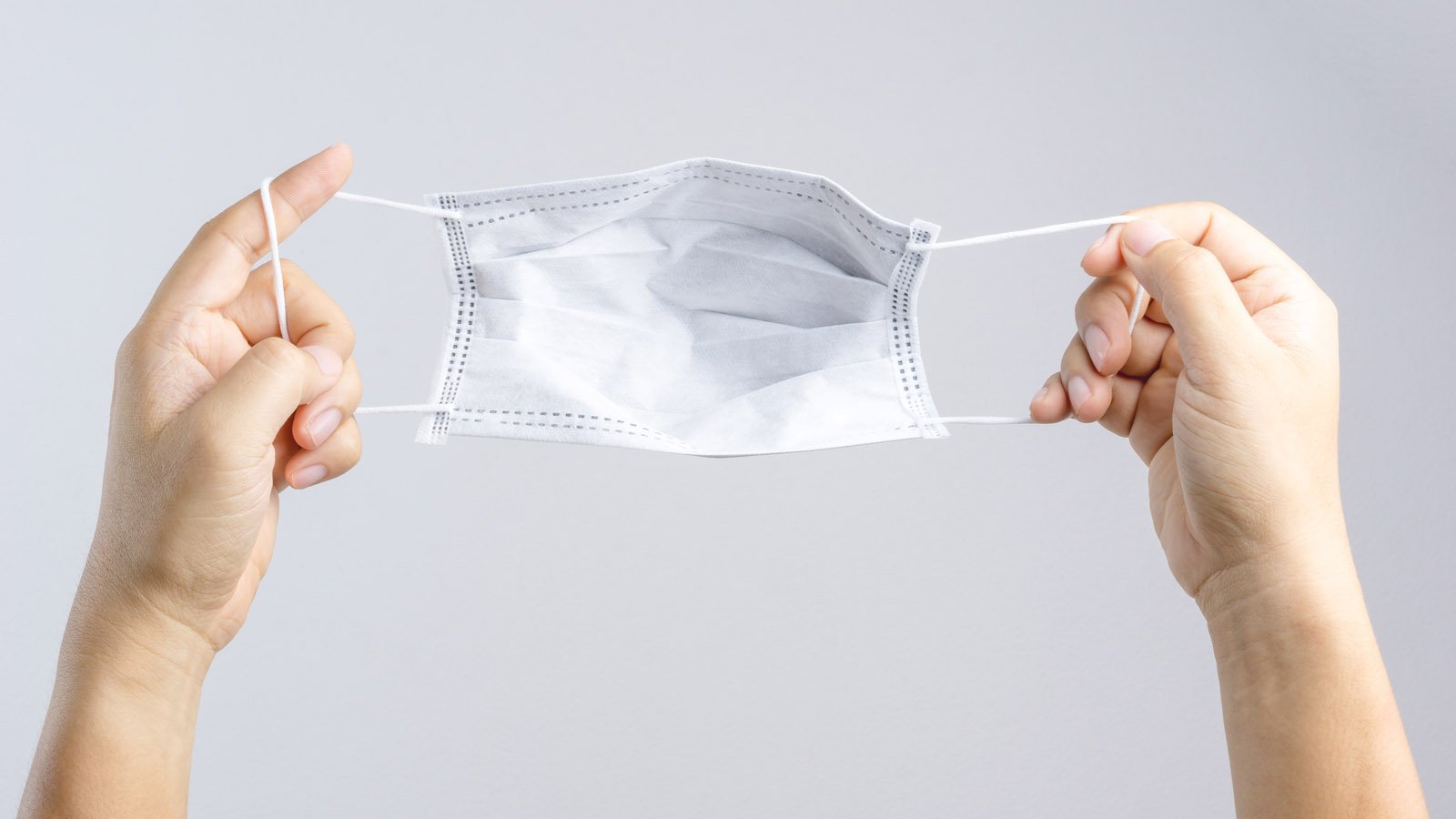The outbreak of China’s coronavirus is a big deal. To date, it has infected over 30,000 people across the globe, and killed at least 638. Even if the disease stopped spreading today — which it won’t — this outbreak will still go down as one of the most pervasive epidemics in modern world history.
And yet, markets don’t seem to care. U.S. stocks dropped big on Friday, Jan. 31, on coronavirus concerns. And that was it. Ever since, stocks have been in rally mode, with the S&P 500 cruising to fresh all-time highs in early February.
Why? Because, while the coronavirus outbreak is a big deal, it’s also a short-term deal. Outbreaks happen all the time. They never last more than a few months. They hit, they spread, they peak, they go down and within a few months, they’re gone. Their impact on the economy, while severe for a few months, is short-lived, and economic activity always rebounds sharply as soon as the virus disappears.
It also helps that: 1) the Wuhan coronavirus isn’t as deadly as other viruses with a mere 2% fatality rate (SARS, by comparison, had a 10% fatality rate), 2) it’s largely contained to China, 3) significant progress has been made on a potential treatment or cure, and 4) in response to the virus outbreak, China has injected tons of fiscal stimuli and halved tariffs on U.S. goods.
As such, when it comes to the coronavirus, you have a short-term problem. The best investment game-plan is to buy the short-term weakness in long-term winners.
I already picked some Chinese stocks to buy once coronavirus fears fade. Now, I’m picking seven U.S. stocks to buy on coronavirus weakness.
Without further ado, let’s take a look at those names.
Stocks to Buy: Apple (AAPL)

Global technology giant Apple (NASDAQ:AAPL) has been hit hard from multiple angles thanks to the coronavirus outbreak in China. First, the company closed all corporate offices, stores and contact centers in mainland China until Feb. 9. Second, many of Apple’s suppliers have been ordered to reduce or altogether halt production until Feb. 10. Third, thanks to the production pause, Apple’s AirPods may have a supply shortage for the new few weeks.
None of that is great news, especially since China is a big part of the Apple growth narrative. As such, it should be no surprise that Apple stock dropped 5% Jan. 31 on coronavirus fears.
But, Apple will be just fine. This is true for a few reasons. First, the App Store will get a big boost during the outbreak (there are hundreds of millions of Chinese consumers stuck at home, desperate for ways to entertain themselves). Second, February typically isn’t a big month for iPhone sales. Third, because an iPhone is a big-ticket purchase, any lost demand during February won’t forever disappear — it will just shift into March or April. Fourth, Apple’s big iPhone launch comes in the back half of 2020. By then, the outbreak should be old news.
All in all, Apple will weather the coronavirus storm just fine, and the company is still staring at huge growth potential in the back half of the year.
Nike (NKE)

Shares of global athletic apparel giant Nike (NYSE:NKE) dropped about 8% in late January on concerns that the coronavirus outbreak could materially impact the company’s operations in China.
Those concerns were confirmed in early February, when management said in a press release that they expect the outbreak to have a “material impact” on operations in China. The company said it has shut down about half of its stores in China. Those that remain open are operating at reduced hours with lower-than-usual traffic volumes.
That’s not great news for Nike. A slowdown in this big and hyper-growth segment will have ripple effects across Nike’s entire business.
But, this negative impact will be short-lived. During the SARS epidemic, retail sales in China slowed during the outbreak, but as soon as the outbreak cleared up, retail sales trends came roaring back to life in a hurry. The same thing should happen this time around, especially since the People’s Bank of China (PBOC) has injected stimulus packages and tariffs on U.S. goods have been halved. Thus, once the outbreak ends, retail sales in China will accelerate meaningfully, and Nike’s China business will get back to firing on all cylinders.
Advanced Micro Devices (AMD)

In the last week of January, shares of red-hot chip maker Advanced Micro Devices (NASDAQ:AMD) dropped about 10% amid concerns that the coronavirus outbreak would dampen chip demand in China. To make matters worse, AMD reported mixed fourth-quarter numbers in late January that included a light first-quarter revenue guide.
But, these concerns seem overstated.
As I’ve written before, global epidemics historically tend not to have an impact on the semiconductor market. SARS didn’t hit the semiconductor market in 2002. On the contrary, global semiconductor sales actually rose during the SARS outbreak. Similarly, during the H7N9 outbreak in the 2010s, global semiconductor sales rose.
The same thing should happen this time, especially since U.S-China trade tensions are easing while central banks through Asia are rushing to inject stimulus packages and support their economies. Once this outbreak ends, corporate spending on things like semiconductor chips should roar higher. AMD’s numbers will charge even higher, since this company remains the market share leader in critical verticals of the semiconductor market.
Big picture — coronavirus weakness in AMD stock is overstated. Over the next few months, the fundamentals underlying AMD will improve, not deteriorate. As they do, AMD stock will go higher, not lower.
Starbucks (SBUX)

Much like Nike, global coffee house operator Starbucks (NASDAQ:SBUX) has been forced to close about half of its cafes in China, with an unclear timeline as to when those stores will re-open. Also, echoing what management at Nike said, Starbucks management said that they expect the outbreak to have a “materially” negative impact on current quarter and full-year numbers.
In response to that news, Starbucks stock has shed about 10% off its mid-January highs.
But, while China remains a very important piece of the Starbucks growth narrative, the country accounts for only about 10% of Starbucks’ total revenue. So, the negative impacts won’t be that big. Further, they will be ephemeral. They won’t have any impact on the long-term growth narrative, which is centered around increasing coffee consumption, urbanization and a rising middle class in China.
If anything, tons of fiscal stimulus from the PBOC will only accelerate those longer-term trends once the outbreak passes.
As such, if Starbucks stock keeps dropping on coronavirus fears, that weakness will ultimately be nothing more than a good buying opportunity into a long-term winner.
Intel (INTC)

The bull thesis on global semiconductor giant Intel (NASDAQ:INTC) is very similar to the bull thesis on Advanced Micro Devices.
Specifically, Intel stock dropped about 8% in late January on fears that the coronavirus outbreak in China would dampen global semiconductor demand. But, historically speaking, Chinese-originated global epidemics don’t have a meaningful impact on global semiconductor demand. On the contrary, global semiconductor sales rose in 2002-03 amid the SARS outbreak, and in the 2010s amid the H7N9 outbreak.
Meanwhile, Intel just reported a blowout fourth-quarter earnings report and delivered a robust first-quarter guide, the sum of which imply that demand in the company’s core data-centric markets is rebounding, not falling.
It will take more than a short-term epidemic in China to derail these rebounding demand trends. Plus, once the epidemic fades, these data-centric demand trends will actually accelerate higher, because of stimulus from Asian central banks as well as accelerated U.S.-China trade war deescalation.
Broadly, then, the most likely path forward for Intel stock in 2020 is higher, not lower.
Skechers (SKX)

Very similar to Nike, global athletic apparel company Skechers (NYSE:SKX) has broad exposure to China, and as such, Skechers stock dropped on fears that the coronavirus outbreak could provide a meaningful drag on the company’s numbers. But in mid-day trading, SKX stock is up over 5% on record sales figures.
To give you an idea of how important China is to Skechers, the word “China” was used over 50 times in the company’s most recent conference call, versus less than 20 combined mentions of “U.S.” and the “United States.” That’s because Skechers opened 87 new stores in China in the third quarter, is constructing its first distribution center in China, and reported 21% constant-currency sales growth in the country in Q3.
In other words, China is really important to the Skechers growth narrative.
But the coronavirus outbreak isn’t here to stay. It will disappear, and probably fairly soon, considering that the spread rate of the disease has dropped dramatically in recent days. Once it clears up, consumers will rush back to their old ways, and retail sales trends will rebound significantly (just look at how retail sales trends in China rebounded as soon as the SARS outbreak ended).
Consequently, Skechers’ numbers may be bad for a month or two. And that’s it. Meanwhile, Skechers stock is still very cheap at just 14 times forward earnings. That’s too cheap to not buy the stock on an overdone selloff.
Crocs (CROX)

Staying in the retail world, sandal maker Crocs (NASDAQ:CROX) has dropped 11% amid the Wuhan coronavirus outbreak. While this selloff may not have everything to do with the epidemic, it is nonetheless overdone given the operational momentum Crocs has today, and the limited exposure the brand has to China.
Crocs operates 146 stores in all of Asia, and only a handful of those are in China (only 28 as of December 2018). In total, Crocs operates about 368 stores in the world. So, Crocs has limited exposure to Asia (only 40% store exposure, which is less than many other global apparel brands) and extremely mitigated exposure to China (only 8% store exposure). This limited exposure means that Crocs numbers likely won’t be hit all that hard by the coronavirus outbreak.
At the same time, this brand is on fire right now. The company just reported its best ever fourth quarter. Revenues, margins and profits are roaring higher as Crocs are regaining mainstream fashion relevance and popularity amid a return to “ugly shoe” styles. This trend is showing no signs of easing. So, big growth should continue here for the foreseeable future.
As it does, Crocs stock will bounce back from this recent selloff.
Estee Lauder (EL)

One of the companies hit hardest by the coronavirus outbreak in China has been multinational beauty care giant Estee Lauder (NYSE:EL), who derives a whopping 17% of its sales from China.
Thanks to the broad exposure, Credit Suisse estimates that Estee Lauder could see 3% to 5% decrease in earnings per share this quarter. This profit risk is why Estee Lauder stock dropped more than 10% in the wake of the coronavirus outbreak.
But, Estee Lauder just reported fourth-quarter numbers. They were quite good, beating on both the top and bottom lines. And, while management said that retail store closures, reduced retail hours, lower store traffic volumes and travel restrictions will weigh on near-term operating results, management also sounded confident in their ability to weather the storm and mitigate adverse impacts.
Specifically, instead of running away from China, Estee Lauder is doubling down on China. It is going to up research and development spending. It is going to build a new innovation center, launch new fragrance products this year and continue to build-out the online channel.
Management’s confident tone breathed life back into bulls. Estee Lauder stock rallied after the print. And, it appears that so long as the coronavirus outbreak doesn’t get worse from here, this stock is on course to rebound over the next few months.
As of this writing, Luke Lango was long AAPL.
